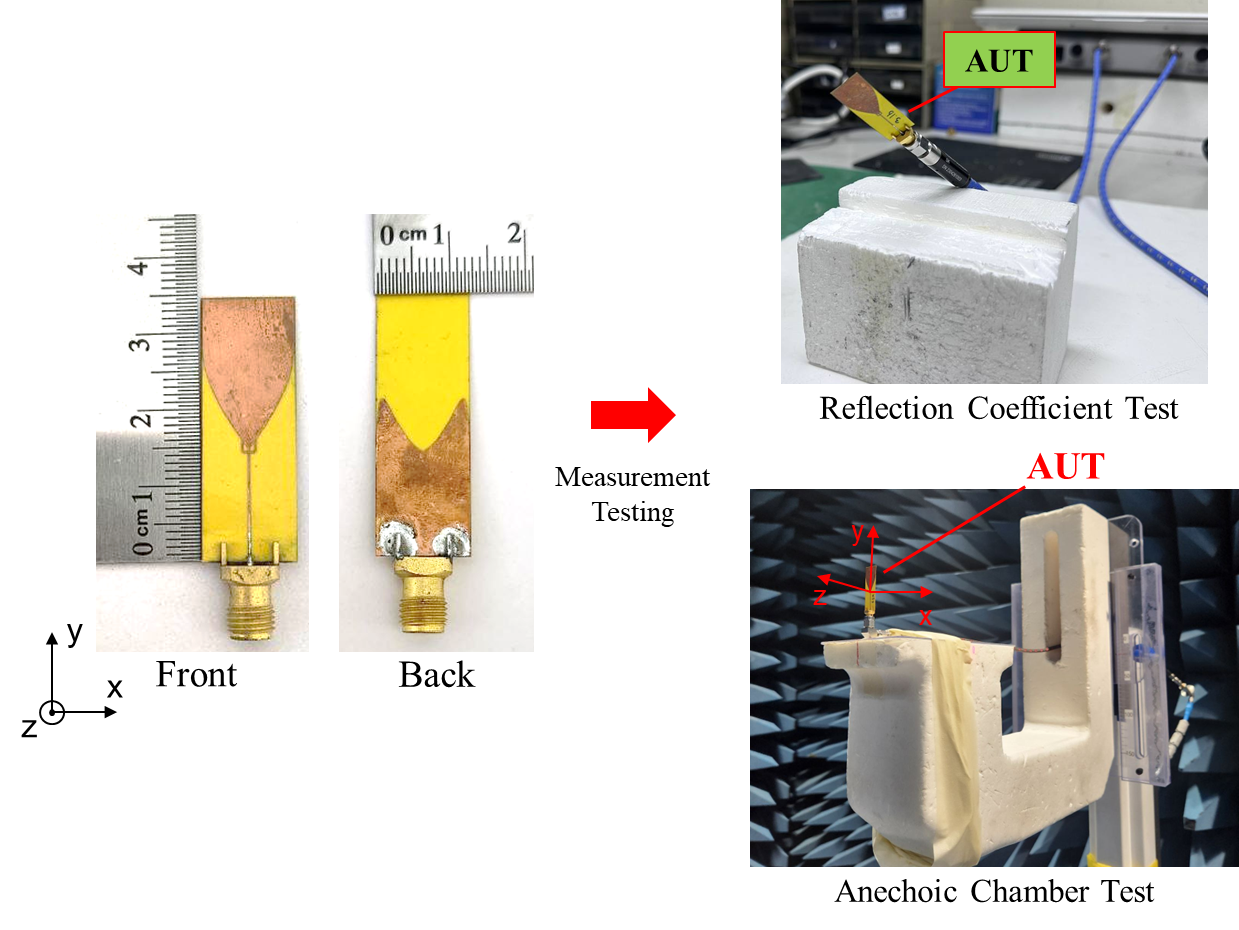Jan 2025 - July 2025
Role: Main Engineer / Designer
Overview:
Conventional direction-finding antenna hardware uses three radiators with three beams to determine direction. However, the coverage is limited to three areas, leaving blind spots that are not detected. The proposed method multiplies the number of beams to six, increasing coverage while maintaining the same number of radiators.
Design goal
- A three-element antenna with six beams to enhance coverage
- Wide-band performance matching with a wineglass shape through a Bezier curve
- Direction finding application operating in high-band of UWB (6 - 9 GHz)
Birfurcated Beams antenna:
Circular array antenna:
Step 1. Using the long dipole antenna in a circular array will provide the necessary pattern for a bifurcated beam pattern per element. However, the impedance matching (S11) at the operating frequency of 6 - 9 GHz is highlighted in yellow.
Step 2. We redesigned the element with the wineglass element from previous work (wineglass antenna). The wideband performance is inherited from 4 to 7 GHz. However, the mutual coupling (S21) is very high.
Step 3. To reduce mutual coupling, we removed the sharp edges to lower reflections in the ground plane.
The radiation pattern still has two beams for each element.
Further detail optimization of the Bezier curve is performed with the HFSS Adaptive Multiobjective Optimization algorithm. The goal is to improve performance in mutual coupling and bandwidth.
- Circular array antenna with 6 beams expanding its coverage
- Windband antenna covering from (6 - 9 GHz)
- Satisfying mutual coupling between ports below -12.7 dB in the operating frequency
Master's Final Thesis :
"Design of wineglass shape UWB antenna on flexible substrate using Bezier curve optimization" - Seoul National University of Science and Technology, 2025




























